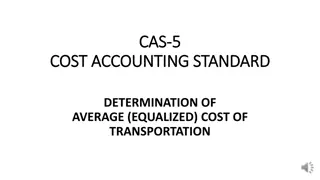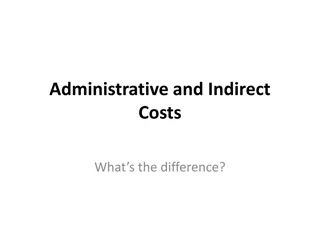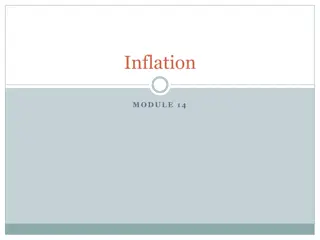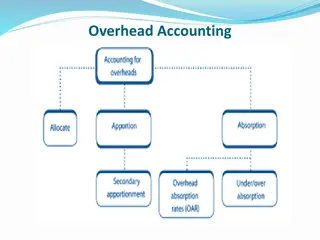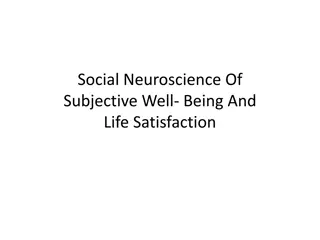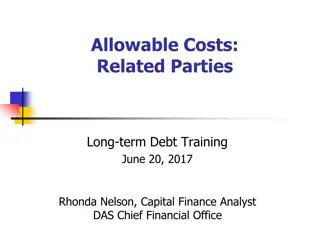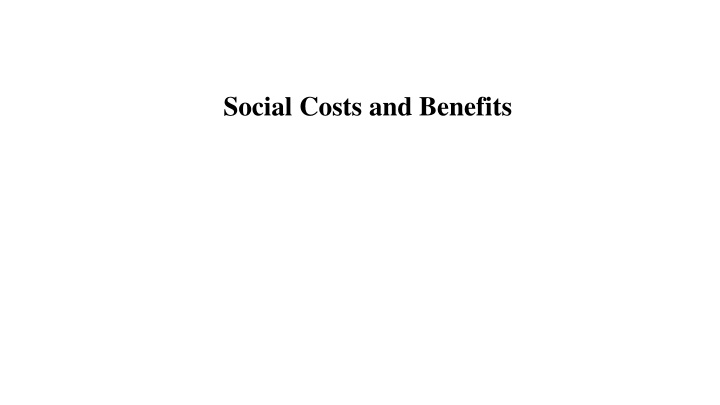
Social Costs and Benefits in Economics
Explore the concept of social costs and benefits in economics, including private costs, externalities, and the impacts on society. Learn about the differences between private and social benefits, as well as external costs and benefits. Understand how negative and positive externalities can affect economic transactions and social welfare.
Download Presentation

Please find below an Image/Link to download the presentation.
The content on the website is provided AS IS for your information and personal use only. It may not be sold, licensed, or shared on other websites without obtaining consent from the author. If you encounter any issues during the download, it is possible that the publisher has removed the file from their server.
You are allowed to download the files provided on this website for personal or commercial use, subject to the condition that they are used lawfully. All files are the property of their respective owners.
The content on the website is provided AS IS for your information and personal use only. It may not be sold, licensed, or shared on other websites without obtaining consent from the author.
E N D
Presentation Transcript
SOCIAL BENEFITS AND COSTS: Social Costs and Benefits Social Costs Social Benefits Private Benefits External Benefits Private Costs External Costs Negative Production Externality Negative Consumption Externality Positive Production Externality Positive Consumption Externality
Social Benefits and Costs: The sum of benefits to everyone in the society, including both private benefits and external benefits is called social benefit. The social costs are the sum of costs to everyone in society, including both private costs and external costs.
Features of social costs and social benefits: 1. Social cost refers to the cost of producing a commodity to society as a whole, while the social benefit is the social good that benefits a larger number of people in the largest possible way. 2. Social costs are borne by society and social benefits are available free of cost. 3. Social costs are passed on to persons not involved in the activity in a direct way, while social benefits provide the basis for goodness, charity, and benefits to society. 4. Social costs and social benefits are a much broader concept.
Private cost and benefit: Benefits and costs to the decision maker, ignoring the benefits and costs to the third parties are called private benefit and private cost. Private costs are the producer s cost of providing goods or services. It includes internal costs incurred for inputs, labor, rent, and depreciation but excludes external costs incurred as environmental damage unless the producer is liable to pay for them. Private benefit is the benefit derived by an individual or firm directly involved in a transaction as either buyer or seller.
External cost and Benefit: External cost is one type of social cost, while external benefit is one type of social benefit. The benefits and costs to the third parties are called as external benefits and costs. Third parties are people outside the market transaction who are affected by the product. The production of a commodity by a firm generates disadvantages (costs) as well as advantages (benefits) to other members of society (third parties) are called as external costs and external benefits. Types of external costs and benefits: The external costs are called as negative externality, while, external benefit is called positive externality.
Negative externalities occur when the consumption or production of a good causes a harmful effect on a third party. Examples of negative externalities Loud music. If you play loud music at night, your neighbor may not be able to sleep. Pollution: The personal cost of driving are buying car, petrol, your time.
Negative Production Externality: When producing a good causes a harmful effect to a third party. Therefore the social cost is greater than the private cost. Examples of negative production externalities Burning coal for energy creates pollution. Producing conventional vegetables with pesticides causes harmful effects on the environment.
Negative Consumption Externality: This occurs when consuming a good causes a harmful effect to a third party. In this case, the social benefit is less than the private benefit. Examples of negative externalities of consumption Consuming alcohol leads to an increase in drunkenness, increased risk of car accidents and social disorder. Consuming loud music late at night keeps your neighbours awake. Consuming cigarettes causes passive smoking to others in the vicinity.
Positive Externality: This occurs when the consumption or production of a good causes a benefit to a third party. For example: When you consume education you get a private benefit. But there are also benefits to the rest of society. E.g you are able to educate other people and therefore they benefit as a result of your education. (positive consumption externality)
Positive Production Externality This occurs when a third party benefits from the production of a good. For example, building a train station may provide shelter for the homeless when it is raining. Example: Getting a vaccination provides a benefit to other people in society because you do not spread infectious diseases.
Positive Consumption Externality: With positive externalities, the benefit to society is greater than your personal benefit. Therefore with a positive externality the Social Benefit > Private Benefit. In a free market without government intervention, there would be an under-consumption of education and public transport.

